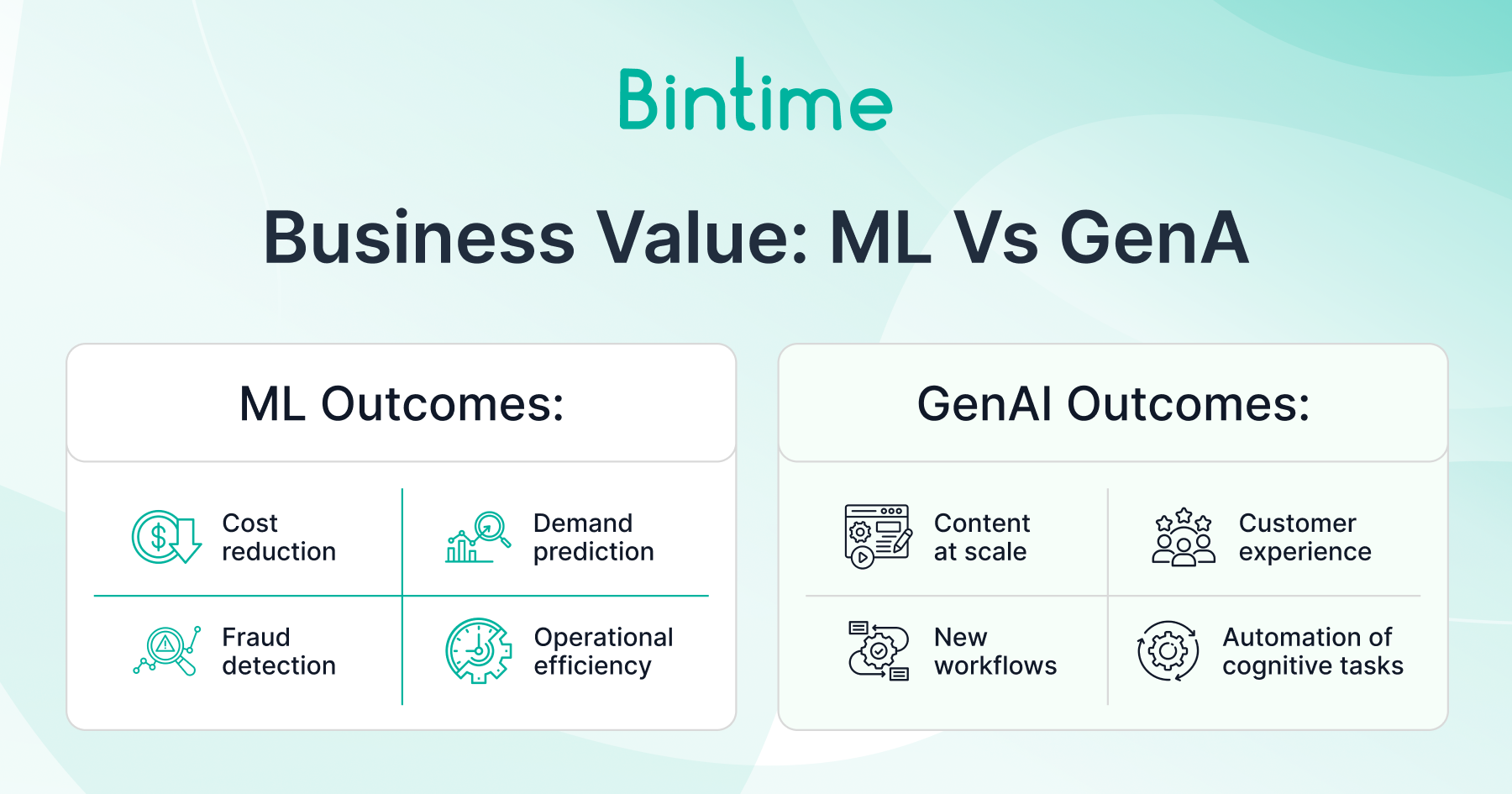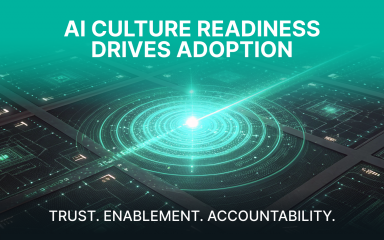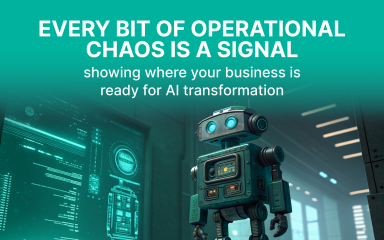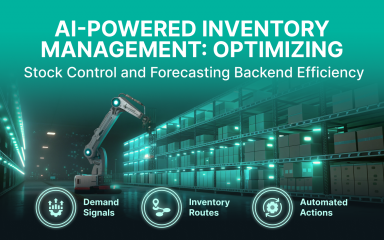Generative AI vs machine learning represents the most critical strategic decision for enterprise technology leaders in 2025. Although Machine learning (ML) has provided more than a decade of efficiency and performance in terms of prediction and classification, Generative AI (GenAI) is currently opening up access to the new frontiers of creativity and content creation, such as the production of original content like realistic pictures, text, etc. with advanced deep learning models, this requires the concerted and conscientious
What Is Generative AI vs Machine Learning?
Generative AI vs machine learning highlights the shift from models that classify the world to models that create it. Machine Learning (ML) is a subset of Artificial Intelligence (AI) focused on training algorithms to learn patterns from existing data to make predictions or decisions. Generative AI (GenAI) is a specialized subset of ML that uses deep learning models (like LLMs) to produce entirely new content—such as text, images, or code—based on learned data distributions.
Why Understanding This Difference Matters for Enterprises
Companies are leaving experimentation in 2025 to massive implementation. It is essential to distinguish: when an ML model is used to perform a task that needs generation, or the other way around, it will result in wasted investment and technical debt. A recent report suggests that firms investing in GenAI can recoup an average of 3.71 on every one dollar they invest in it by investing early but only through application of the technology to the appropriate use case.
It should also be mentioned that machine learning is applicable to optimizing the existing processes and data-driven predictions, whereas generative AI is more applicable to tasks of creative and content generation. This distinction will help the enterprises to match the appropriate technology with their business goals.
| Feature | Generative AI (GenAI) | Traditional Machine Learning (ML) |
| Primary Output | New Content (Text, Images, Code, Audio) | Prediction, Classification, Decision, Numerical Value |
| Core Function | Creation and Synthesis | Analysis and Classification |
| Data Requirement | Massive, often Unstructured/Unlabeled Datasets | Structured, Labeled Data is common |
| Key Use Cases | Content creation, Chatbots, Code generation, Design | Demand forecasting, Fraud detection, Recommendation engines, Churn prediction |
Generative AI vs Machine Learning Framework for Enterprises
To avoid fragmented or “shadow AI” use, a comprehensive enterprise AI strategy framework is essential. This framework ensures that both generative ai vs machine learning differences are addressed at every stage of the lifecycle. A successful strategy must consider the unique requirements of both machine learning and generative AI, ensuring their integration and management throughout the AI lifecycle.
Vision & Objectives
The first step in an enterprise AI strategy framework is aligning the technology with a clear business outcome.
Question: What is the primary goal of our AI investment?
Answer: If the goal is to optimize an existing process based on historical patterns (e.g., reduce inventory costs), ML is the appropriate choice. If the goal is to create new customer experiences or dramatically increase content velocity (e.g., personalized product descriptions at scale), GenAI is the fit. Deploying a generative ai tool can enable enterprises to automate content creation and personalize customer interactions at scale. McKinsey reports that 71% of companies are already using Generative AI in at least one business function, underscoring the urgency of this alignment.
Data & Infrastructure
ML depends heavily on clean, labeled and structured data, while GenAI requires vast unstructured datasets to learn complex language or visual distributions. ML infrastructure focuses on scalable data pipelines (ETL), where data processing pipelines are essential for preparing and transforming input data for machine learning models. GenAI infrastructure requires powerful GPU clusters for fine-tuning LLMs and robust MLOps for model orchestration and API-first integration. Generative AI models also require advanced infrastructure to process data at scale, enabling the creation of complex outputs from large, unstructured datasets.
Talent & Governance
Different models require different human expertise. ML teams need data scientists and ML engineers, while GenAI requires specialized deep learning experts, Prompt Engineers, and legal/ethics personnel. Applications of generative machine learning in content creation include writing articles and generating images.
Model Lifecycle
The lifecycle of these models differs significantly, a key point in the machine learning vs generative ai differences. The ML Lifecycle involves training, validation, deployment, and continuous retraining. The GenAI Lifecycle involves pre-training, fine-tuning, prompt optimization, and Reinforcement Learning from Human Feedback (RLHF). Generative AI often relies on unsupervised learning or self-supervised learning approaches, and may also use semi supervised learning, contrasting with the supervised approach common in machine learning.
Deployment & Integration
ML solutions are often deployed as invisible backend services (e.g., an API flagging fraud). GenAI is highly visible, powering customer-facing virtual assistants or automated content creation tools. Generative AI tools are increasingly used to power customer-facing applications and automate content creation, showcasing their versatility and creative potential across industries.
Monitoring & Observability
Monitoring focuses on distinct failure modes. ML monitoring tracks metrics like Accuracy and Precision (is the prediction correct?). Effective monitoring relies on ongoing data analysis to ensure model accuracy and reliability. GenAI monitoring tracks Hallucinations, Toxicity, and Bias (is the content safe, relevant, and true?).
In short: Gen AI is best suited for content creation and automation, while traditional ML still dominates structured analytics and forecasting. They require different infrastructure, talent, and monitoring strategies.
 From Strategy to Deployment: ML vs Generative AI in Action
From Strategy to Deployment: ML vs Generative AI in Action
Moving from a theoretical framework to a practical enterprise AI implementation strategy requires distinct paths for both technologies. Deploying machine learning solutions often begins with analyzing data to identify patterns and opportunities for automation.
Pilot Projects & Proof of Concept
What mistakes do enterprises make when choosing between ML and GenAI?
Answer: The biggest mistake is applying a machine learning vs generative ai pilot to the wrong problem. ML is best for pilots focused on measurable efficiency gains in structured domains (e.g., predictive maintenance), but the success of these pilot projects also depends on the quality and relevance of the data instances used for training and evaluation. GenAI is ideal for creative, content-focused pilots (e.g., auto-generating personalized email copy).
Vendor Integration
The vendor landscape is bifurcated. ML remains dominated by cloud providers offering comprehensive stacks: AWS Sagemaker, Azure ML, and Google Cloud AI. GenAI is heavily weighted toward foundational model providers like OpenAI, Anthropic, and Cohere. A robust enterprise AI deployment strategy requires integrating both.
Cloud Stack & Infrastructure
The modern AI stack is hybrid. ML requires scalable data pipelines and traditional GPU/CPU clusters, while GenAI emphasizes LLM orchestration and Retrieval-Augmented Generation (RAG) architecture to reduce model hallucination and ground outputs in proprietary enterprise data.
Talent and Organizational Alignment
Building an AI in enterprise talent strategy is crucial, as the skills gap is a primary roadblock to scaling AI. 72% of IT leaders cite AI skills as a crucial gap that needs urgent addressing. Integrating AI technologies requires ongoing training and upskilling to maximize their value and ensure effective use.
Building AI-Ready Teams
Enterprises need to train existing data scientists in deep learning and establish new roles, such as Prompt Engineers and AI Ethicists. Leadership must champion the new workflows.
Cross-Functional Collaboration
The technologies touch different parts of the business. ML Analysts work closely with Finance (forecasting) and Operations, while GenAI Experts partner with Marketing, CX, and R&D.
Leadership & Change Management
Leaders must align AI adoption with culture. A common challenge is “Shadow AI,” where employees use unauthorized GenAI tools. Nearly half of customer service agents are using unapproved external AI tools, increasing security risks. Change management is key to providing secure, sanctioned AI tools internally.
Best Practices: Combining Generative AI and Machine Learning
The ultimate competitive edge lies in an integrated approach. Leading firms achieve their greatest ROI by combining both disciplines in an enterprise AI strategy best practices approach. Generative AI can also be used to generate data for training or augmenting machine learning models, especially when real datasets are limited, further enhancing model performance and versatility.
Governance & Compliance
Governance must address both model types. For ML, the focus is on model explainability (why did the model predict this?). For GenAI, the focus is on bias detection, safe content generation, and legal compliance (did the model plagiarize or generate false information?). Interpretability in machine learning models allows users to understand how predictions are made, which is less prominent in generative AI models.
Vendor Partnerships
Leverage cloud providers for your core ML models and data infrastructure, while forming strategic partnerships with cutting-edge GenAI API vendors. This multi-vendor approach is key to agile innovation and risk mitigation.
Continuous Improvement
ML models need ongoing retraining to prevent model drift. GenAI requires iterative fine-tuning and the use of RLHF to keep the model’s tone, accuracy, and brand alignment current.
Observability & Optimization: ML vs Generative AI
A strong enterprise AI observability strategy is required to measure success and manage risk. Machine learning outputs decisions, classifications, or predictions based on input data, which are then evaluated for accuracy and business impact. Measuring model performance differs fundamentally for machine learning vs generative ai differences.
Monitoring Model Performance
| Metric Category | Traditional ML Metrics | Generative AI Metrics |
| Accuracy | Precision, Recall, F1-Score | Hallucination Rate, Truthfulness |
| Value | ROI on prediction accuracy | Relevance, User Satisfaction, Creativity Score |
| Health | Data Drift, Model Drift | Prompt Injection Attacks, Toxicity Score |
Feedback Loops
ML typically uses continuous retraining with new labeled data. GenAI relies on human feedback to score and rank model outputs, a process called Reinforcement Learning from Human Feedback (RLHF), which is instrumental in reducing issues like toxicity and inaccuracy.
The Role of Consultants: Choosing Between ML and Generative AI
When embarking on a new AI initiative, external expertise can accelerate time-to-value and mitigate risk.
When to Bring in Consultants
Enterprises should involve consultants when they struggle to evaluate ROI, lack in-house talent to manage the architectural complexity of LLMs, or need a neutral party to define their enterprise AI value strategy consultants can provide. This is especially true given that 68% of institutions have moved fewer than 30% of their AI experiments into full production.
How Consultants Add Value
Consultants accelerate adoption, design secure and scalable architecture, and bridge the talent gap, saving millions by avoiding costly mistakes in model selection and deployment.
FAQ
What is the difference between generative AI and machine learning?
- Machine learning vs generative ai differences center on output: ML analyzes and predicts (e.g., predicting sales), while GenAI creates new, original content (e.g., generating product descriptions). GenAI is a modern, deep learning-based subset of the broader ML field.
Which is better for enterprises: generative AI or machine learning?
- What is generative ai vs machine learning for enterprise value depends on the task. ML is better for structured, predictive tasks like fraud detection and demand forecasting. GenAI is better for creative, content-heavy tasks like customer service automation and personalized marketing. The optimal strategy uses both.
Can enterprises combine generative AI with machine learning?
- Yes, enterprises can and should combine them. An ML model can identify a customer trend (prediction), and a GenAI model can then use that insight to instantly generate a hyper-personalized ad campaign (creation). This integration unlocks the highest value.
How long does it take to implement generative AI vs machine learning projects?
- An enterprise AI implementation strategy for ML models can take 6–12 months. Simple GenAI applications can be deployed in weeks, but complex, fine-tuned LLMs require a similar 6–12 month timeframe for training, security, and integration.
What mistakes do enterprises make when choosing between ML and GenAI?
- The two biggest mistakes within the enterprise AI strategy framework are: choosing GenAI for a task that only requires ML (over-engineering) and failing to manage the unique risks of GenAI, such as hallucinations and bias.
What’s Next?
The data is clear: 78% of global companies are using AI, with adoption accelerating dramatically since 2022. Enterprises unlock the most value by strategically balancing Generative AI and Machine Learning in a unified enterprise AI strategy for reinforcement. A tactical-only approach—experimenting without a framework—risks wasted investments and leaves you behind competitors who are already scaling at a breakneck pace.
Still unsure which AI model suits your needs or how to unify your Generative AI and Machine Learning initiatives? Talk to our consultants about building a future-proof AI strategy today.
 From Strategy to Deployment: ML vs Generative AI in Action
From Strategy to Deployment: ML vs Generative AI in Action










